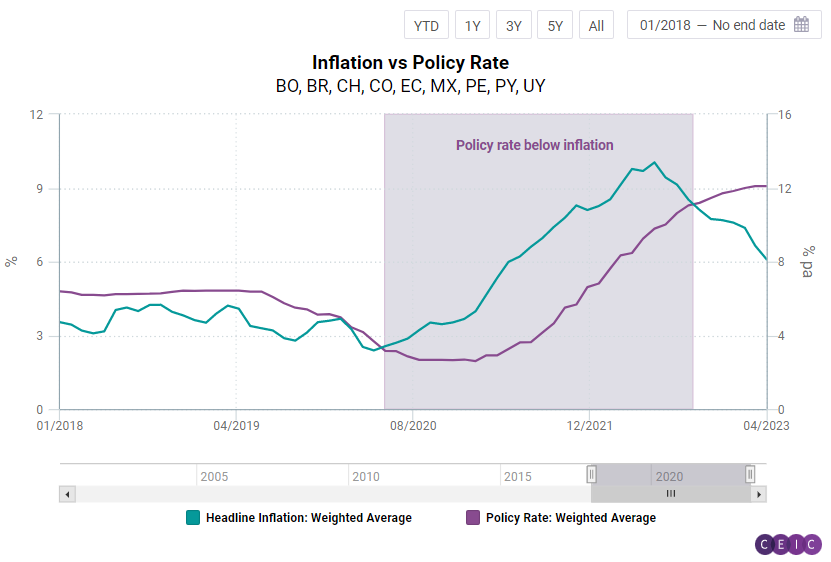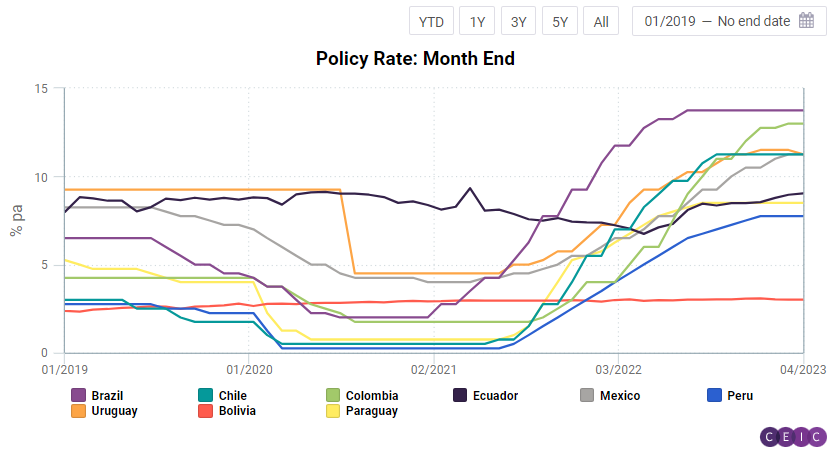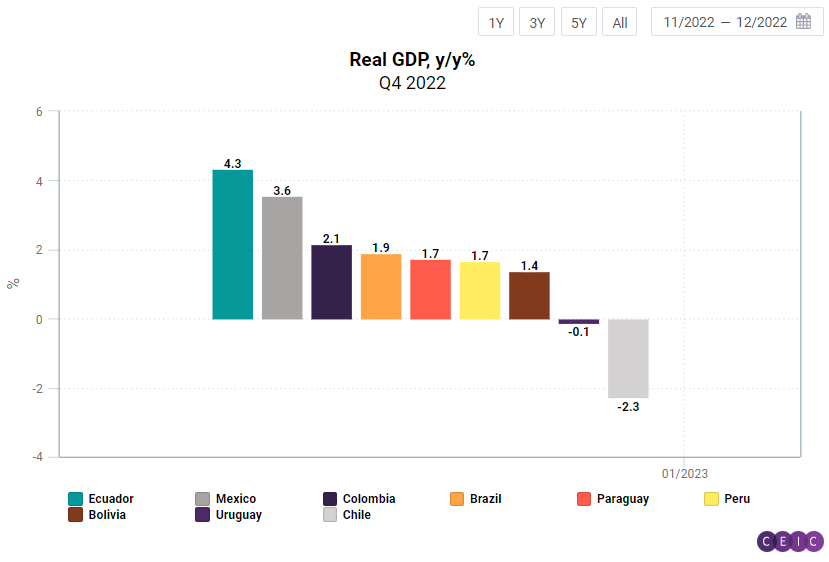
According to data from CEIC's Latin America Economic Activity Tracker, average inflation in Latin America continues to decline. In April 2023, the weighted average inflation of nine countries (Bolivia, Brazil, Chile, Colombia, Ecuador, Mexico, Peru, Paraguay, and Uruguay) reached 6.1% year-on-year, down from 9.8% year-on-year in April 2022. This decline can be attributed to a broad-based decrease in food inflation resulting from monetary policy tightening. It's worth noting that Argentina is not included in the sample due to its outlier status, with inflation at 108% year-on-year in April 2023.

While these selected markets have entered a path of decreasing inflation, it does not necessarily indicate that central banks will halt their tightening measures and loosen their monetary policy in the near future. In March 2023, the aggregate average policy rate rose to 12.1%, the highest in over 20 years, primarily driven by interest rate levels in Brazil (13.75%), Colombia (13%), Chile (11.3%), and Mexico (11.25%). Since June 2020, the average policy rate had been below the average inflation rate due to government stimulus measures implemented following the COVID-19 outbreak to support the economies. However, in October 2022, both indicators converged again as policy rates were increased across the board to curb inflation.

In this environment, it is reasonable to expect central banks to refrain from further rate hikes in the near future. However, this does not imply that interest rates will start declining soon, given that price growth remains significantly above the target range of 2-4%. Additionally, most Latin American economies demonstrate resilience.

The aggregate GDP of the selected nine markets grew at a weighted average of 2.1% year-on-year in Q4 2022, providing central banks with more flexibility to maintain high-interest rates at the expense of further cooling economic activity. Uruguay and Chile stand out as exceptions, as they were the only countries experiencing GDP contractions in Q4 2022, with declines of 0.1% year-on-year and 2.3% year-on-year, respectively.
The CEIC Global Database provides access to a vast database where users can gain insight into the ever-changing dynamics of world economies.
.png?width=160&name=ceic-logo-Vector%20logo%20no%20tagline%20(002).png)
